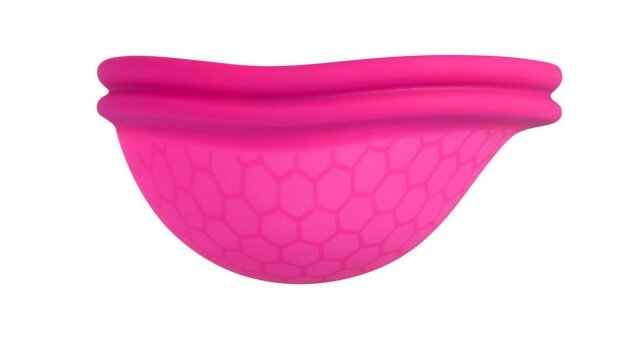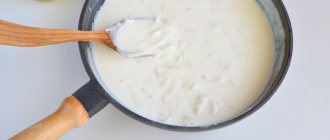Menstrual cups are considered the most modern hygiene product today. However, not everyone knows what it is, how to use it and why to do it. To understand the advantages, disadvantages and features of cups, we asked a gynecologist.
What is a menstrual cup?
A menstrual cup, or as it is also called a menstrual mouthguard, is a special hygienic device made of medical silicone in the shape of a cup. It is installed in the vagina, thanks to the softness of the material, it fits tightly to the body and allows you to collect all the menstrual flow.
You can use the cup without removing it for up to 12 hours. At the same time, it is much more comfortable than pads and tampons. In addition, it allows you to significantly save money, because one menstrual guard can be used for up to 10 years.
Benefits of a menstrual cup
The reasons why women prefer a new hygiene device to a familiar one can be very different. However, to make the right choice, you need to know about all the advantages and disadvantages of menstrual trays. The product has many advantages:
- saving money - one cup costing from 400 to 3000 rubles can be used for 8-10 years without spending money on pads and tampons;
- environmental safety - thanks to the use of the bowl, the amount of discarded hygiene products, which take a long time to decompose, causing damage to the ecosystem, is significantly reduced;
- possibility of longer use - you can empty the bowl no more than once every 6-12 hours due to its capacity;
- does not contribute to the development of pathogenic organisms, since it collects secretions in a vacuum and does not absorb them (for example, when using a cup, the development of Staphylococcus aureus is impossible, so women who use modern hygiene products are protected from the development of the disease);
- by collecting rather than absorbing secretions, the cup allows you to keep the vaginal microflora unchanged;
- provided that it is installed correctly, the product does not cause physical discomfort;
- The menstrual guard is invisible under any clothing, you can even choose tight outfits.
Pros and cons of using menstrual cups

Pros and cons of menstrual cups, 24tv
As we have already said, the main difference between menstrual cups and tampons and pads is that menstrual containers do not absorb secretions, but collect them in one reservoir, which after a certain time must be removed from the woman’s vagina and washed. Any product, even the most perfect at first glance, has both pros and cons.
Disadvantages of using a menstrual cup:
- The first negative point is irritation, as well as possible allergic reactions. Not all women have a tolerance to silicone in their bodies. Some people may experience redness, itching and other unpleasant sensations in the body due to allergic reactions.
- The second point is the inability to correctly insert the cup into the vagina. There are videos on the Internet on how to do it correctly. And in every medical center or pharmacy where you want to buy a cup, the kit always includes instructions for use, which clearly and concisely make it clear how to insert it correctly.
- To change the bowl, you need constant access to hot water, as well as soap. If a person is on the road or at work, then he may not always have access to water and hygiene products. Therefore, it is easier and faster for them to replace a tampon and use a wet wipe than to search for everything they need to replace the cup.
Menstrual cups also have a number of advantages . Here's how they appear:
- The first and very significant advantage is that menstrual cups can be used many times.
- Economy - this advantage follows precisely from the first advantage. You can pay once for a cup and use it for several years, rather than buying pads and tampons every month from cycle to cycle.
- Menstrual cups are environmentally friendly in their structure. By using them, rather than pads or tampons, you do not release waste products into the environment.
- The cup can remain in the vagina for 12 hours. At least that’s what the manufacturers say, but to maintain hygiene and a feeling of comfort, it is recommended to do this more often.
Before purchasing and using the cup, it is recommended to consult your gynecologist. You can philosophize about gynecologists for a long time, but it is better to contact your doctor specifically. If he helps monitor your women’s health for a long period of time, then based on your characteristics, it will be easy for him to help you choose the right cup and its size. Age, amount of discharge and number of pregnancies will also influence. You can, of course, choose a cup on gynecologist forums, but it is better to contact a medical specialist in person. In addition, if you have allergies or any other contraindications, a specialist will determine whether you can use such a cup or whether you need to look for another option.

It is better to consult a doctor for advice, vip54moda
Disadvantages of hygiene products
Menstrual cups, with their abundance of advantages, also have a number of features that may influence the desire to immediately become the owner of this product. Therefore, before purchasing, it is worth knowing all the possible risks. Not all women are ultimately satisfied with their purchase.
- The menstrual tray is not able to collect the discharge that has accumulated on the walls of the vagina, which in the future can create the effect of leakage, coming out after the end of menstruation.
- A narrow vagina can become an obstacle to painless installation and removal of even the smallest cup.
- Removing and cleaning the cup can be inconvenient in public places. You will have to constantly have sanitary napkins and water with you to clean yourself up at any time.
- Before you can insert and remove the cup easily and quickly, you will have to devote some time to training.
- You won’t be able to try on the device before purchasing, and you won’t be able to return it after purchase, so if the size doesn’t fit, you’ll have to put up with wasted savings.
Rules for selecting a menstrual cup
Menstrual cups are made by several manufacturers. They all offer only 2 sizes to choose from. The larger one is recommended for women aged 30 and over who have had at least one natural birth. Smaller mouth guards are suitable for all childless girls under 30.
If detailed measurements do not satisfy you, you can determine the length of the cervix. To do this, after thoroughly washing your hands, insert your finger into the vagina. It is best to do this while sitting on the toilet or squatting. Try to feel the cervix with your finger. It is a small protrusion in the shape of the tip of the nose, 1.5-2 cm in diameter. It is located on the back, up from the vagina.
The cervix may be centrally located or slightly offset - this is a natural physiological phenomenon. If you couldn’t feel the protrusion, it only means that your uterus is located high and you will need a high cup. If it is easy to find the cervix, a short menstrual guard will suit you.
In addition to their size, the bowls are distinguished by the rigidity of the silicone from which they are made. Most women with naturally developed muscles are comfortable with a medium firm cup. If a girl experiences discomfort when inserting a tampon and has weak intimate muscles, it is worth opting for soft cups. Hard menstrual cups are designed for those who work out and cannot put off physical activity during their period.
What are menstrual cups made of? What are their advantages?
Most products are made of silicone or rubber. The latter are not recommended for women with allergies to rubber or latex.
Benefits of a menstrual cup:
- Reusable - menstruation will not take you by surprise, the menstrual cup can be used for 5 years with proper care.
- Comfort - not felt inside the body.
- Easy to clean - just wash the vessel with mild soap.
- The menstrual cup does not affect the natural microflora of the vagina.
- The product is convenient to use at night; the bowl will provide you with 10 hours of restful sleep.
- During menstruation, using this hygiene product, you can work, walk, or travel.
- A menstrual cup can be used for heavy flow.
- This feminine hygiene product is great for women who are allergic to tampons and pads.
- You will no longer be bothered by an unpleasant odor.
- A menstrual cup costs about $30, but you won't have to buy tampons or pads again for 5-7 years.
Read also Question and answer: how to get your period if you are late?
Recommendations for inserting and removing the cup
In order to install the bowl correctly, you need to fold it in a certain way. In this state, its size is no more than an ordinary tampon. Don't be alarmed if it doesn't work out very well the first time. At first, it will take more effort before you adapt and determine the most convenient and fastest way for you to insert the cup. To make the cup fit easier, you can add a little water-based lubricant.
It is also recommended to remove the bowl from the toilet or bathtub for the first few days or weeks. Otherwise, everything around will be covered in red spots. To remove the mouthguard, you need to press on it from below from the sides. This will break the seal and the bowl will easily come out.
Menstrual cups for virgins and teenage girls
Teenage girls and virgins can use a menstrual cup along with lubricant. If you are worried about losing your hymen, it is better to use other hygiene products. However, as a rule, the use of a cup is possible for girls who have previously used tampons.
If your period has started recently, then the discharge will probably be light and spotty. For such cases, you need a bowl of the smallest size, short and narrow.
Women suffering from vaginismus may experience difficulty inserting a menstrual cup. Usually, involuntary contraction of the vaginal muscles is based on some psychological problem. Therefore, psychotherapy and the use of a sufficient amount of lubricant are effective in this case. Water-based lubricants are widely used. Silicone lubricant is not the best choice as it will make the menstrual cup sticky. Do not use glycerin. Vaseline is also not suitable for latex bowls.

Caring for your menstrual cup
Immediately after purchase and before first use, you need to boil the bowl in water on the stove or in the microwave. The same procedure must be repeated each time during menstruation before using the cup for the first time. After removal, the cup should be thoroughly washed with soap.
Usually, when you buy a menstrual cup, it comes with a fabric bag, in which it should be stored the entire time it is not in use. Do not leave it in a plastic bag or any other completely closed container - this will lead to an unpleasant odor.
Andrey Yurievich









